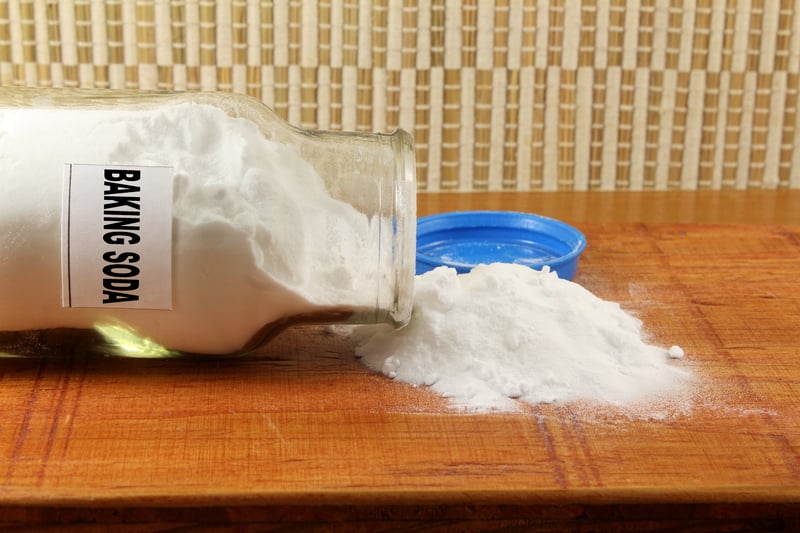Effective Mattress Stain Removal Techniques
Posted on 30/01/2025
A good night's sleep is essential for overall health and well-being. However, an unsightly and stained mattress can be a significant deterrent to achieving peaceful rest. Stains on a mattress not only detract from its appearance but can also harbor bacteria and other contaminants. Fortunately, there are several effective techniques that can help you remove these stains and restore your mattress to its original condition. This article will provide you with a comprehensive guide to the most effective mattress stain removal techniques.
Understanding Different Types of Mattress Stains
Before delving into stain removal methods, it's important to understand the different types of stains that can appear on your mattress. These can generally be categorized into the following groups:
- Biological Stains: These include stains from blood, urine, sweat, and other bodily fluids.
- Food and Drink Stains: Common food and beverage spills, such as coffee, wine, and juice.
- Other Stains: This category can include mold, mildew, and other less common sources of staining.
Knowing the category of the stain will guide you in choosing the most effective removal technique.

General Tips for Mattress Stain Removal
Before you start the stain removal process, follow these general tips to maximize your chances of success:
- Act quickly. The sooner you treat a stain, the easier it will be to remove.
- Use a clean cloth or sponge to blot the stain, rather than scrubbing, to avoid spreading it further.
- Test any cleaning solution on a small, inconspicuous area of the mattress to ensure it doesn't cause damage or discoloration.
- Avoid using excessive amounts of water, as this can lead to mold growth inside the mattress.
Techniques for Removing Biological Stains
Biological stains can be particularly challenging to remove due to their organic nature. Here are specific techniques for dealing with common biological stains:
Blood Stains
- Cold Water: Rinse the area with cold water as soon as you notice the stain. Avoid hot water, as it can set the stain.
- Hydrogen Peroxide: Apply a small amount of hydrogen peroxide to the stain and blot with a clean cloth. You may need to repeat this process several times.
- Baking Soda Paste: Mix baking soda with a small amount of cold water to form a paste. Apply it to the stain, let it sit for 30 minutes, and then blot with a damp cloth.
Urine Stains
- Vinegar Solution: Mix equal parts white vinegar and water. Spray the solution onto the stain and blot with a clean cloth.
- Baking Soda: After treating the stain with vinegar solution, sprinkle baking soda over the area to neutralize odors. Let it sit for several hours before vacuuming it away.
- Enzyme Cleaner: Use an enzyme-based cleaner specifically designed for urine stains. Follow the instructions on the product label.
Other Bodily Fluids
- Detergent Solution: Mix a few drops of mild dish soap with water. Use a cloth to apply the solution to the stain and blot it away.
- Hydrogen Peroxide and Baking Soda: This combination can also be effective for other bodily fluid stains. Apply hydrogen peroxide, let it bubble, then blot and sprinkle with baking soda. Let it sit and then vacuum.
Techniques for Food and Drink Stains
Food and drink spills are common and can leave lasting stains on your mattress. Here are some effective techniques for removing these types of stains:
Coffee Stains
- Mild Detergent: Mix a teaspoon of mild detergent with a cup of water. Blot the stain with the solution, then blot with a clean cloth to remove excess moisture.
- Vinegar Solution: If the detergent does not fully remove the stain, follow up with a mixture of equal parts white vinegar and water.
Wine Stains
- Salt: Immediately cover the wine stain with table salt. The salt will absorb the wine. After it dries, vacuum the salt away.
- Cold Water: Rinse the area with cold water, then blot dry with a clean cloth.
- Detergent Solution: Apply a detergent solution as described above to remove any remaining stain.
Juice Stains
- Soap and Water: Mix a few drops of dish soap with water and blot the stain with the solution.
- Hydrogen Peroxide: If the stain persists, treat it with a small amount of hydrogen peroxide.
Techniques for Other Types of Stains
In some cases, your mattress may get stained with substances such as mold or mildew. Here's how to tackle these:
Mold and Mildew
- Sunlight: Expose the affected area of the mattress to direct sunlight, which can help kill mold spores.
- Rubbing Alcohol Solution: Mix equal parts rubbing alcohol and water. Lightly spray the affected area and wipe with a clean cloth.
- Baking Soda: Sprinkle baking soda over the area and let it sit for several hours before vacuuming.
General Stains
- All-Purpose Cleaner: Many all-purpose cleaners are safe for use on mattresses. Follow the product instructions for best results.
- Steam Cleaning: Using a steam cleaner can be effective for deep-cleaning your mattress and removing various types of stains.

Preventing Future Stains
After you've gone through the effort of cleaning your mattress, you'll want to keep it clean and stain-free. Here are some preventive measures you can take:
- Mattress Protector: Use a waterproof mattress protector to guard against spills and stains.
- Regular Cleaning: Regularly vacuum your mattress and wash your bedding to prevent build-up of dust and stains.
- Avoid Eating/Drinking in Bed: Try to keep food and drinks away from your mattress to minimize the risk of spills.
Conclusion
Maintaining a clean and stain-free mattress is essential for ensuring a healthy sleep environment. By understanding the different types of stains and using the appropriate removal techniques, you can effectively deal with any mishaps that may occur. Remember to act quickly, test your cleaning solutions, and follow preventive measures to keep your mattress in the best possible condition. With these guidelines, you'll be well-equipped to handle any stain and maintain a clean, comfortable sleeping space.







